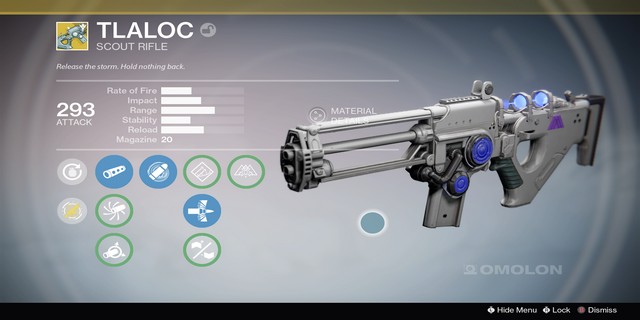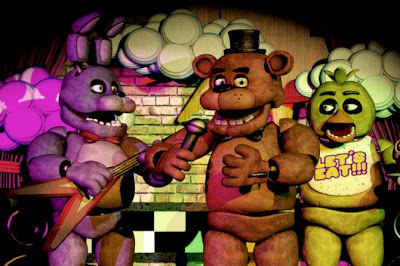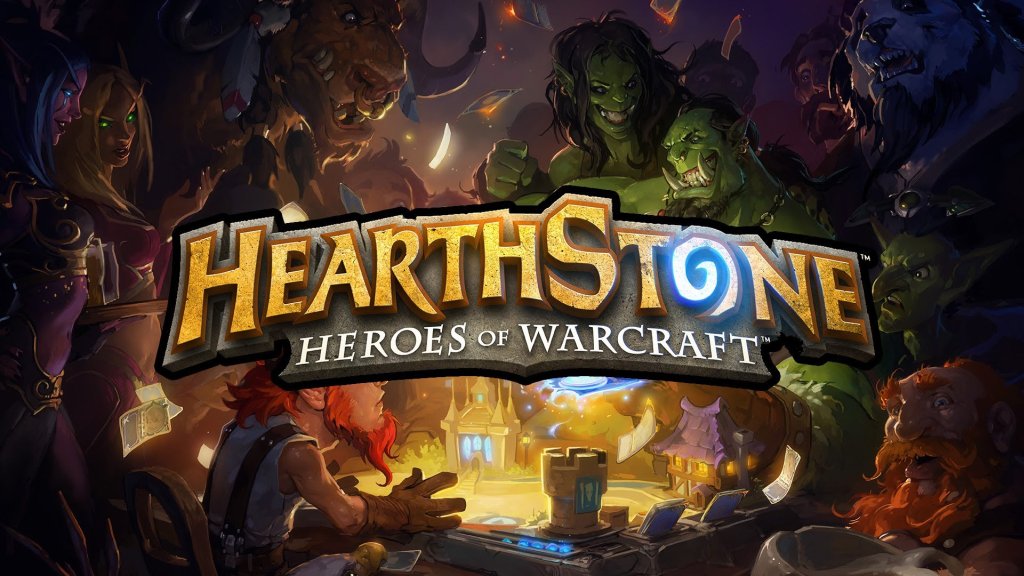


Update on upcoming vampire games: Vampire-themed games don’t get much love these days, and the much-awaited and highly anticipated World of Darkness massively multiplayer online RPG from CCP Games, the makers of EVE Online, has been cancelled. Since 2011, the game’s development had been on-going with a significantly reduced team, and it wasn’t until April of 2014 that the studio decided to finally axe the game. Much like EVE Online, the World of Darkness MMORPG was to be a sandbox experience set in the universe crafted by White Wolf, which has spawned several vampire-themed games for the PC including Vampire: The Masquerade - Bloodlines. In any case, with the end of World of Darkness, it’s hard to see where the genre will go next. We’ll keep this article updated in case of new developments.
Vampires have invaded the mass-media, but it's not necessarily a recent phenomenon. Ever since Bram Stoker's portrayal of Dracula, there's been movies, TV series, books, comic books and even plastic teeth dedicated to these creatures of the night with as many different properties as you can get. Yes, their portrayal has even bled into video games, though we haven't had any sparkly ones yet (except in The Sims). Without further ado, here's best vampire games available for the PC, PS3, Xbox 360 and older consoles.
While the Castlevania series doesn't feature vampire games per se, it is the most popular game series that features them pointy teeth doomy dudes. In addition, it features the most iconic vampire of all time. Hailing all the way from Transylvania, Romania, at varying heights and varying weights like a pointy toothed Christian Bale, in the blue corner, scourge of humanity, Dracula!
Castlevania
Debuting in Japan in 1986 on the NES, Castlevania was a typical platformer where you played as Simon Belmont. As should be common knowledge to anyone with gamer-cred, Belmont = vampire slayer. It's in the scriptures, look it up. Simon goes to Castlevania, Dracula's castle, and destroys both it and its owner. The shot where Simon looks on as the demonic castle crumbles in the distance is one that would reappear in other games of the series.
Castlevania II: Simon's Quest
The second game, Castlevania II: Simon's Quest, was a large departure from the first game both in scope and design. The linear gameplay was foregone in favour of a non-linear design similar to Metroid while being more open-ended, featuring new elements like a world map. In addition, a few staples of RPG design have made their way into the game, like allowing the player to purchase supplies, equipment and weapon upgrades in the various towns he could visit. You may also remember the popular "What a horrible night to have a curse!" message appearing when night fell. A highly ambitious game with a large amount of nonsensical elements attached, Simon's Quest didn't however review very well.
Castlevania III: Dracula's Curse
The open-ended design of the second game was scrapped in favour of returning to form, with Castlevania III: Dracula's Curse coming out on the NES in 1989. Despite not having the open world map that allowed you to visit whatever any longer, the new game allowed the player to take branching paths as well as select between multiple characters. Well received as it was, it paved Castlevania's way to the 16-bit console generation.
Super Castlevania IV
Super Castlevania IV brings you back behind the whip of Simon Belmont as he does the same damned thing as in all the other games, killing Dracula and bringing his castle down, but this time it is in glorious 16 bit! You also get wonderful directional whip swinging, sort of like a short ranged Spiderman that doesn't use his web to shoot himself up, a greatly expanded upon control scheme because there are more buttons on the SNES controller to choose from, and the very unrealistic fact that Simon can be controlled in the air. He's sort of like an upright, whip swinging, vampire slaying, hairless cat. Highly praised by critics, the series was solidified and was here to stay.
Castlevania: Bloodlines
Castlevania: Bloodlines came out on the Genesis in 1994. Standard fare for Castlevania, there's levels, special weapons, chunks of levels with mini-bosses at the end, yada-yada. But there's something odd about this game. It doesn't happen exclusively in Dracula's castle, nor in Romania for that matter. The first level does, but then there's Athens, Pisa, a weapons factory in Germany, Versailles and even a fictional castle in England. In addition, you aren't Belmont anymore, at least not in the name - bridging the story between Bram Stoker's book and the Castlevania series, you play as John Morris, the whip dude and as Eric Lecarde, the spear dude. There's a lot of intricacy added to the simple "go to castle and kill the vampire" story, but even though it does get a bit hard to follow at times, it does anchor the series into something more significant than Whack-a-Vamp.
Castlevania: Symphony of the Night
A major turn for the awesome, the next game of the series was a literal game-changer. Castlevania: Symphony of the Night released to great acclaim in 1997 on the Playstation and later on the Sega Saturn, and it was such a great game that it partly coined its own term that is in use even today: "Metroidvania". A template followed by many games since then, Symphony of the Night is a game that still looks amazing today because of the extremely fluid animations applied to the beautifully crafted characters designed by Ayami Kojima. The game has been re-released on the PSP since. The beginning is an especially tantalizing prospect - the intro of the game is actually a straight up fight against Dracula. But enough talk, have at thee!
Castlevania and Castlevania: Legacy of Darkness
Later on we get into the 3D era, with Castlevania and Castlevania: Legacy of Darkness for the Nintendo 64. Like most early 3D games in the late 90s, they were heavily criticised for bad camera controls and generally clunky gameplay, but they still moved the story forward and added to the series' roster.
Castlevania: Lament of Innocence
In 2003 we've got the next Castlevania title, Lament of Innocence. Very similar to Devil May Cry and the later God of War, this title went heavily into the hack and slash spectacle fighter genre. This time you play as yet another member of the Belmont family - Leon, as he searches through the cursed castle for his kidnapped girl. He starts with a whip, but it's not the Vampire Killer that we all know and love from the earlier games - he does get it near the end of the game though (spoilers!). Of course, eventually Leon too has to kill Dracula. Have you noticed a pattern yet?
Castlevania: Lords of Shadow
Fast-forward quite a few more years and you get to 2010, the year in which we get Castlevania: Lords of Shadow. The ridiculously deep plot that intertwined the several titles of the series has been rebooted and moved into the third-person action-adventure game genre. Now we play as Gabriel Belmont, who also has a whip. This time it's also a holy cross, though, and apparently it's made for combat. It's a Combat Cross. The game is a great departure from the older game of the series, but keeps some mainstays - vampires and werewolves are still in the game while adding dark fantasy elements to it, as is fitting of a reboot of a game with vampires in it. We get trolls, goblins and whatnot to kill with the whip for experience points. The story veers from vampires and castles to God and Satan and limbo and religion and stuff. Oddly enough, there is no Dracula in this game until the very end. Pleasant twist, I won't spoil it.
A series that has achieved cult status for the extremely interesting atmosphere and vast lore, the Legacy of Kain series features uncharacteristically mature games for their time, not for nudity or sexuality, but for the complex story in which you actually play the anti-hero as well as wondrous voice-acting.
Blood Omen: The Legacy of Kain
Released on the Playstation in 1996 and later on the Windows PC, the first title of the Legacy of Kain series puts you in control of the eponymous anti-hero, a newly-resurrected vampire. Initially on a blood path against the assassins that killed him, Kain goes from seeing his revival as a curse to seeing it as a blessing. Unlike what most players have come to expect from The Legacy of Kain, the first title was actually a two-dimensional action-adventure game with a bird's eye view perspective.
There is some creative liberty taken with vampire lore in the series. Kain as a vampire won't evaporate in sunlight, but he does less damage while touched by it. I guess he just has really good sunblock. Aside of that, these vampire can suck remotely, being able to absorb the blood of enemies like through an invisible straw from great distances. That's a staple of the Legacy of Kain games.
It's a game that you may deem interesting to play, and if you do, it will take you a while to finish, some players clocking over 50 hours in it.
Hopefully eventually you'll get used to Kain's battle cry. VAE VICTIS!
The Legacy of Kain: Soul Reaver
After Crystal Dynamics (of the recent Tomb Raider reboot fame) won the Legacy of Kain IP from Silicon Knights in a lawsuit, they have taken the idea and moved it to the next level and next dimension. Soul Reaver is the image of the Legacy of Kain series in most players' minds - it's a third person action-adventure game where you control Raziel, a fallen vampire revived by an The Elder God into wraith form. After being killed by Kain and the passing of 500 years, our hero becomes the interesting odd ghostly form people know him for now. He also lacks a lower jaw, which makes his soul-sucking all the more strange-looking.
Although the game features combat and all that good stuff, the focus is on puzzles more than anything. In addition, because of Raziel's relationship with the world (he's both ethereal and real), he is able to switch between the material and spectral realm, adding both to the atmosphere and the variety of the game. The same location may be quite different between the two realms, and to progress you are usually required to switch between the two.
A great game that may turn you off because the polygons may get in the way, Legacy of Kain is still an enthralling story with a rather unsatisfying cliffhanger ending, but that's alright, there's a sequel to it!
Soul Reaver 2
After the generally lackluster ending of the first Soul Reaver, fans were eager to see how the story of Raziel continued. And that's exactly what the sequel does - it starts with an abridged version of the ending of the first game and moves on from there. Our hero still wants to kill Kain, but his objective is superseded by a quest for knowledge that moves him through history, making him uncover more of his background and predestined fate.
Combat in the game has changed a bit, getting strong attacks and the ability to finish people off with your bare hands as well as execution moves with weapons, like lopping heads off when using swords and whatnot. The graphics are crisper and more defined, but that's standard considering the better technology of the time.
Despite continuing the wraith's story and the good sale numbers, the developers did not feel that the final product was up to their ambitions, and it was criticised for lacking replay value and a definite ending, but this wouldn't be the last we've seen of Raziel.
Blood Omen 2
Blood Omen 2 is the sequel of the first game in the series, returning control to Kain in then Tomb Raider-esque 3rd person fighting and puzzle-solving way of the past two games. With a much higher emphasis on combat than Soul Reaver, this game may be the closest game in this list to actually playing a vampire as you can get (at least thus far). You run around cities, stealth killing guards, solving puzzles and performing vampire feats like throwing enemies away with fancy strength infused sword swings, jumping long distances as well as, of course, Kain's trademark blood sucking through invisible long straws.
Atmospheric, quite fun and interesting, a worthy sequel that unfortunately hasn't been reviewed very well, because it gets repetitive. At least Kain has lost his interest in yelling VAE VICTIS every few sword swings. Guess it got old for him eventually too.
Legacy of Kain: Defiance
Returning players to Nosgoth once more in 2003, Defiance is a departure from the series in that you can play as both the wraith Raziel and the vampire lord Kain, though by alternating between the two at set intervals rather than switching between the two at will. The control of the camera has been stolen from the player this time, changing perspective depending on where the player character is. This has been highly criticised by the players because of how annoying it is to do platforming when you're not in control of the camera, as most of you may have noticed in some more recent games.
On the other hand, combat has gotten improvements, moving the combat design from simple hacking and slashing to a more Devil Must Cry-eque style with enemy juggling and whatnot. It's fun and it's good, even if there's still a huge emphasis on block puzzles prevalent in all the other games.
Also, even if Kain can still suck blood remotely, he also bites victims!
Oh yeah, VAE VICTIS returns, though it's now merely a whisper to the glorious battle cry of the first game.
Even if you don't feel like playing the games, I would highly recommend watching the excellent Let's Plays by LeadingManAE on YouTube, if only for the excellent voice acting that is present throughout the series.
Despite not being the best reviewed game series to date, all of the titles are vampire games through and through - you get to play as the eponymous half-vampire sexy lady with cool blades and horrible movie adaptations by the schlock-maestro Uwe Boll. The portrayal of vampires in this series is more along the lines of Blade than of Dracula, but it lends itself well to the very action-based gameplay.
BloodRayne
Playing as the dhampir Rayne in 1933, before the second world war, you get to kill Nazi vampires! Receiving mixed reviews, the first game in the series was a spectacle fighter along the lines of Devil May Cry with higher amounts of gore strewn throughout, as well as a powerful female protagonist that is over-sexualized. Such was the way of video games in 2002 and such is the way nowadays too. There's room for redemption, but until then we get to slice and dice vampires with a sexy lady wielding unconventional weapons.
BloodRayne 2
Fast-forwarding to the 2000s era, BloodRayne 2 continues the story of Rayne who does a lot of killing. This time, the plot involves her father, Kagan, who gets himself a cult filled with his other offspring. This cult creates the Shroud - an item that has has the ability of allowing vampires to walk around during the day, bringing around a new era of vampire supremacy. Such is the way of vampire games.
BloodRayne: Betrayal
Betraying its 3rd person hack and slash style of gameplay, this game is a downloadable console 2D side scroller with HD graphics and gory attacks. The story of the game is self-contained and may not be canon, but who cares? You slice enemies open with arm blades!
Critics weren't on the same wavelength when reviewing this game - some publications praised its difficulty while others hated the controls and handling, even going so far as entering the top 10 worst games of 2011 on Destructoid.
There's a 3DS BloodRayne game in the works, apparently, but not much is known about it.
Based on the tabletop role-playing game of the same name, this series features two games, one of which has achieved cult status and is seen as one of the best games of all time in some people's eyes (after applying a generous amount of community patches and mods), and the other, well, receiving mixed reviews. The lore of the games in this series is standard Vampire fare, although the established board game adds a lot of lore to the simple night-walking lore. There's 13 vampire clans with different abilities and personality as well as appearance in some cases, but all of them are creatures of the night, are immortal and need to drink blood to sustain their undeath.
Vampire: The Masquerade - Redemption
Released on the PC in 2000, the game features a French crusader turned vampire named Christof in both the Dark Ages and the modern day. Vampires are time-trotting creatures like that, you see - only that this game plays it straight. Unlike games like Soul Reaver, Christof travels through time by being buried underneath a pile of rubble for close to a millennium before being uncovered by archaeologists. That's hardcore. The two time periods have different play styles, with an emphasis on melee in the medieval period and on guns in the modern day. Christof's story is an emotional one with a complex plot that makes you feel involved - the game is marred however by the design flaws and bugs pervasive throughout the game. The next game in the series was not one to do away with this curse, though it had a different fate.
Vampire: The Masquerade - Bloodlines
Released by Troika Games in 2004, Bloodlines is not a sequel to the first game, but it's set in the same fictional universe. This time the player character is part of one of the several vampire clans and you create it yourself in a manner similar to its pen and paper role-playing game origins.
The story of the game is complex and spans multiple locations, a high amount of optional quests and the ability to talk to major characters throughout using various dialogue options, featuring full voice acting that's very pleasant to listen to.
Bloodlines features high amounts of replayability simply because of how the different vampire clans act. For instance the members of one of the vampire clans, the Malkavian, are crazy, and this is portrayed in the game as most of their dialogue choices being non-sequiturs and nonsensical. In addition, they stumble upon bizarre moments, such as inanimate objects speaking to them and the like. There's also a multitude of endings, but the general storyline does not change, as all the core missions need to be completed in order to end the game.
Because of the financial difficulties encountered by the studio after releasing Bloodlines, Troika closed down early the next year. Combined with the rather buggy nature of the game at release, the critics gave the game mixed reviews. Over time, however, the cult following that formed around the game had developed community patches that fixed the problems that the defunct studio could no longer fix as well as bringing back content not present in the final game due to being cut. That's some dedication.
You can get the game now on Steam, it's been there for four years now, but prepare to have to prep it with a large amount of community patches before being able to truly enjoy this grand RPG. If you feel like going through this, you won't regret it.
While certainly not one of the game series that screams Vampires!, The Sims does feature them - not only that, but your character can actually become a Vampire himself!
The Sims 2: Nightlife
The first expansion where we get Vampirism in The Sims, Nightlife allows your Sim to get bitten by another vampire and become a vampire himself. That's how vampirism works, apparently. Once you get your Sim bitten, he receives the vamp phenotype - pointy teeth, red eyes and pale skin. Apparently Servos (the robots) can also turn into vampires. Weird.
The newly vampirized Sim would cover their faces with their forearms walking around with the cloak draped over the arm, as we know that vampires act (though there's a glitch which makes the cloak not be there). Vampires can bite other Sims, turn into bats and fly around, stalk, say Bleh! which makes other Sims empty their bladders, and can even die in the sunlight. Night-Sims like these need to sleep in their coffins during the day. It's a very true to form portrayal of Vampirism, all things considered.
The Sims 3: Late Night
Unlike the expansion to the previous game, the vampires in Late Night do not die when exposed to sunlight. On the other hand, they will eventually pass out and won't be able to use their abilities while outside during the day. Vampirism in this expansion can be cured by simply paying up a bunch of simoleons, which shows that you really can buy anything in the materialistic world of The Sims.
The Sims 3: Supernatural
Improving on the vampires of the Late Night expansion, this expansion allows you to create a vampire Sim from the get-go and can even become immune to sunlight by using a Sunscreen Elixir. In addition, you can become a vampire using Elixirs and even cure vampirism. Science! Vampires in Sims 3 are not immortal any longer though, as they do age five time slower once you reach adulthood. They can become immortal by getting the lifetime award, but you might not like the sparkly skin unless you are on team Edward. Only happens in the sunlight though, so play as a real vampire and you won't get to see this abomination.
Other Notable Games:
DarkWatch




 One Piece: Unlimited World Red Complete Walkthrough for All Chapters
One Piece: Unlimited World Red Complete Walkthrough for All Chapters Destiny: The Taken King Guide On Where To Find Gnashing Teeth Chest and Key To Unlock It
Destiny: The Taken King Guide On Where To Find Gnashing Teeth Chest and Key To Unlock It Shin Megami Tensei IV Wiki: Everything you need to know about the game .
Shin Megami Tensei IV Wiki: Everything you need to know about the game . Top 3 The Witcher 3: Wild Hunt Tips Every Player Must Know During Their First Hour Of Gameplay/Playing
Top 3 The Witcher 3: Wild Hunt Tips Every Player Must Know During Their First Hour Of Gameplay/Playing How to Build a Strong Collection of Cards in Hearthstone
How to Build a Strong Collection of Cards in Hearthstone